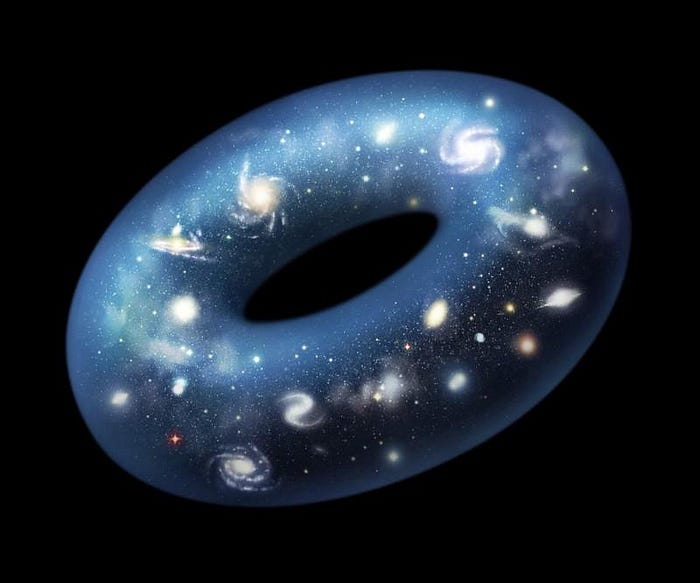Quanta: Big Bounce Simulations Challenge the Big Bang
Posted: Wed Aug 12, 2020 6:33 pm
Big Bounce Simulations Challenge the Big Bang
Quanta Magazine | Abstractions | 2020 Aug 04
A New Kind of Cyclic Universe ~ Anna Ijjas, Paul J. Steinhardt
Quanta Magazine | Abstractions | 2020 Aug 04
Detailed computer simulations have found that a cosmic contraction can generate features of the universe that we observe today.
The standard story of the birth of the cosmos goes something like this: Nearly 14 billion years ago, a tremendous amount of energy materialized as if from nowhere.
In a brief moment of rapid expansion, that burst of energy inflated the cosmos like a balloon. The expansion straightened out any large-scale curvature, leading to a geometry that we now describe as flat. Matter also thoroughly mixed together, so that now the cosmos appears largely (though not perfectly) featureless. Here and there, clumps of particles have created galaxies and stars, but these are just minuscule specks on an otherwise unblemished cosmic canvas.
That theory, which textbooks call inflation, matches all observations to date and is preferred by most cosmologists. But it has conceptual implications that some find disturbing. In most regions of space-time, the rapid expansion would never stop. As a consequence, inflation can’t help but produce a multiverse — a technicolor existence with an infinite variety of pocket universes, one of which we call home. To critics, inflation predicts everything, which means it ultimately predicts nothing. “Inflation doesn’t work as it was intended to work,” said Paul Steinhardt, an architect of inflation who has become one of its most prominent critics.
In recent years, Steinhardt and others have been developing a different story of how our universe came to be. They have revived the idea of a cyclical universe: one that periodically grows and contracts. They hope to replicate the universe that we see — flat and smooth — without the baggage that comes with a bang.
To that end, Steinhardt and his collaborators recently teamed up with researchers who specialize in computational models of gravity. They analyzed how a collapsing universe would change its own structure, and they ultimately discovered that contraction can beat inflation at its own game. No matter how bizarre and twisted the universe looked before it contracted, the collapse would efficiently erase a wide range of primordial wrinkles. ...
Over the last year and a half, a fresh view of the cyclic, or “ekpyrotic,” universe has emerged from a collaboration between Steinhardt, Anna Ijjas, and others — one that achieves renewal without collapse.
A New Kind of Cyclic Universe ~ Anna Ijjas, Paul J. Steinhardt
- Physics Letters B 795:666 (10 Aug 2019) DOI: 10.1016/j.physletb.2019.06.056
- arXiv.org > gr-qc > arXiv:1904.08022 > 16 Apr 2019
- arXiv.org > gr-qc > arXiv:2006.01172 > 01 Jun 2020
- arXiv.org > gr-qc > arXiv:2006.04999 > 09 Jun 2020 (v1), 08 Jul 2020 (v2)


